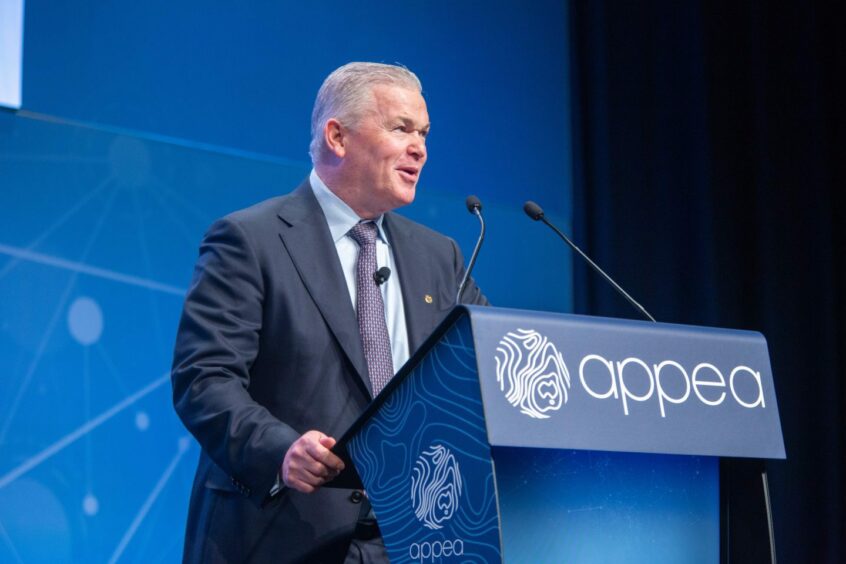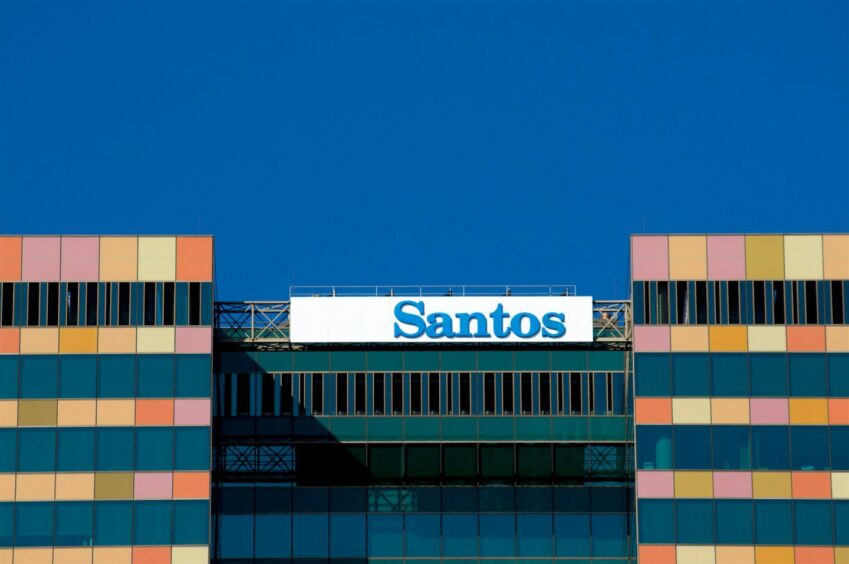
The momentum of the energy transition must be maintained without compromising energy security, and that includes affordability, as well as universal access to reliable energy. But “we can only do this through decarbonisation, not defossilisation,” said Santos chief executive Kevin Gallagher.
Speaking to delegates at the Australian Petroleum Production & Exploration Association (APPEA) 2022 conference in Brisbane today, he stressed the importance of carbon capture and storage (CCS) projects, especially those in Australia at the low end of the cost curve.
The world will still be using oil and gas in 2050 – according to the International Energy Agency’s (IEA’s) most ambitious scenario – Net Zero by 2050.
Gallagher said “there’s an uncomfortable reason for this – we simply don’t have alternatives today to replace oil and gas in myriad uses that go far beyond electricity generation and transport.
Those uses include the fertilisers that have allowed us to produce more food using less water and less land, the cement and steel that have built our modern cities, and the polymers that are the building blocks for the clothing, plastics, and chemicals we use every day.
If we want an economy that makes things, we are going to need oil and gas because renewables cannot replace them as feedstocks for fertilisers and polymers.
The oil age that started in the 1800s has enabled the biggest leap in human progress ever – and it occurred over just a couple of hundred years.
This progress gives me confidence that it is technology – developed through human ingenuity –that will ultimately solve the energy and climate dilemma we currently face.
If we are serious about decarbonisation, we must find ways – through technology – to make these fuels cleaner.
No technology can make a bigger difference to the energy transition than carbon capture and storage (CCS), with the IEA saying it will be almost impossible to achieve net zero by 2050 without it.
This will include technology to extract and store carbon from our operations, and also exciting technologies such as Direct Air Capture and Post Combustion Capture which have the potential to significantly reduce and offset Scope 1, 2 and 3 emissions, especially in hard-to-abate sectors.”
Gallagher also noted the importance of energy security as Australia pursues its climate goals as “energy security is the foundation of national security.”
He said “the new focus on stopping oil and gas projects in environmentally-responsible jurisdictions such as Australia is centred around discrediting a proven technology for low-cost, large-scale emissions reduction – carbon capture and storage.Yet, CCS has been done before.
We are doing it now in 27 commercial projects around the world. And it works. ExxonMobil has been using CCS since 1970.
The biggest project in the world is right here in Australia at Gorgon’s LNG project in Western Australia. It has successfully stored 6 million tonnes of CO2 since it started up in 2019.
And at Santos, we are building a 1.7 million tonne per year CCS project at Moomba in South Australia’s Cooper Basin.The exciting thing about the Cooper Basin is that there is storage capacity for up to 20 million tonnes of CO2 per year for up to 50 years.
That would be equivalent to taking one-third of light duty vehicles off Australian roads each year.
Not only will our Moomba project be one of the biggest in the world today, it will be one of the lowest cost, at around US$24 per tonne.
At Moomba, we are also trialling CSIRO and other Direct Air Capture and Post Combustion Capture technologies.
These exciting technologies have the potential to negate emissions elsewhere in the economy, especially in hard-to-abate sectors that Australia still needs.
Sectors that manufacture essential everyday products like fertilisers, cement, steel, and polymers.
Earlier this year we took FEED on our Bayu-Undan CCS project in the Timor Sea, northwest of our Darwin LNG project.
We are looking at a storage capacity of around 10 million tonnes of CO2 per year once production from the field ceases.
This would enable us to store 2.3 million tonnes of CO2 per year from our Barossa gas project, making it one of the lowest-carbon LNG projects in the world.
Bayu-Undan is a low-cost, large-scale, commercial CCS proposal that could also store CO2 from our customers in Korea and Japan who have already expressed great interest in the project.
Just as our customers have looked to us for energy resources for decades, they are now looking to us to help them decarbonise their economies through CCS.
In Western Australia (WA), we are looking at the potential for our Reindeer facilities in WA to be used for CCS when gas production ends.
Importantly, all these CCS projects are at the low end of the global CCS cost curve, giving Santos a critical competitive advantage at a time when the need to accelerate CCS deployment globally has never been greater.
Natural gas combined with CCS technology is also the fastest and most realistic path to a future hydrogen economy, at a price customers will be willing to pay.”
In 2050, under the IEA’s Net Zero scenario, about half the world’s gas production would be used to make hydrogen and about 40% of the world’s hydrogen would be made from natural gas.
Gallagher told delegates that “the challenge has always been how to make them economic and create revenue streams from these projects, and I believe their time has now come. But we should be under no illusion that decarbonisation is costless.
We will need private sector investment and innovative public policy to accelerate the deployment of these important low-carbon technologies at the huge scale that is now needed.
I am confident that the combination of our adjacent skills and expertise, our carbon storage resources, our infrastructure position, our customer base, our history of innovation and Australia’s leading regulatory position – puts our industry in the best position to lead the energy transition through the combination of natural gas and CCS.
The IPCC and the IEA agree that CCS is one of the most important low-carbon technologies to achieve our climate goals.
But we have never applied CCS globally at the scale that it needs to be and that’s what we’re doing right now.
By 2050, under the IEA’s Net Zero scenario, CCS projects will need to store 7.6 billion tonnes of CO2 each year, nearly 200 times the amount we store today.
Carbon capture and storage will not only reduce the Scope 1 and 2 emissions from oil and gas developments, but it will also enable faster, lower-cost deployment of clean fuels such as hydrogen, which has no Scope 3, or customer, emissions.
And, as I said earlier, CCS is one of few proven technologies with the potential to significantly reduce emissions from hard-to-abate sectors, such as manufacturing and heavy industry.”
Recommended for you

 © Shutterstock / Marlon Trottmann
© Shutterstock / Marlon Trottmann